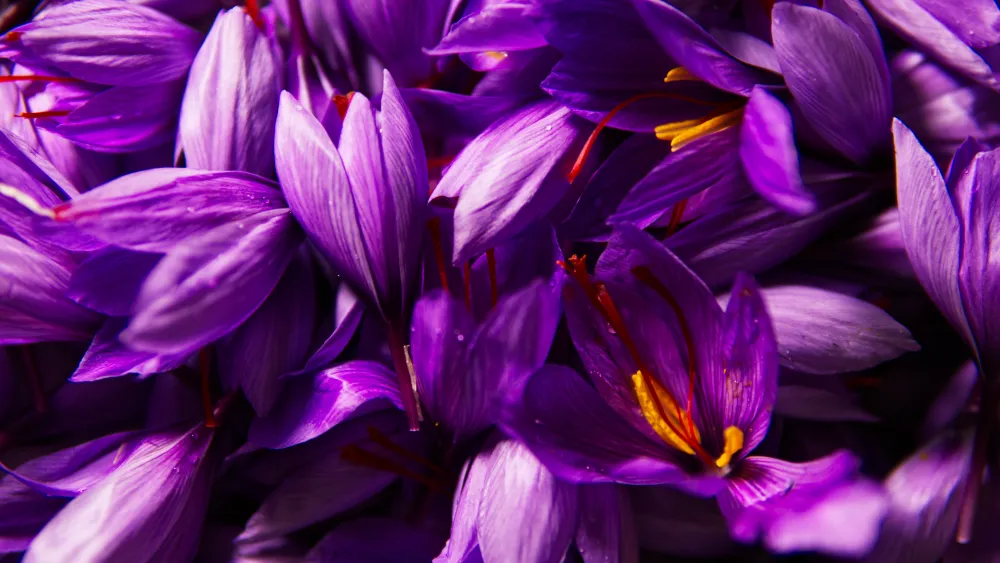The Enchanting Kesar Flower: A Journey into the World of Saffron

Buy Minimum of Rs. 499 to Get Free Shipping on Cash on Delivery

Welcome to the fascinating world of the Kesar flower, also known as saffron. This exquisite flower has captivated the hearts and taste buds of people around the globe for centuries. In this blog post, we will delve into the origins, uses, and benefits of the Kesar flower, as well as explore its cultural significance. Get ready to embark on a journey of discovery!
Saffron, scientifically known as Crocus sativus, is a perennial flowering plant that belongs to the iris family. It is native to Southwest Asia and has been cultivated for thousands of years for its vibrant red stigmas, which are harvested and dried to create the precious spice we know as saffron. The Kesar flower blooms for only a few weeks in autumn, making its harvest a labor-intensive process.
The history of saffron traces back to ancient times, with references found in Egyptian, Persian, and Indian texts. It was highly valued for its culinary, medicinal, and dyeing properties. Today, saffron is primarily cultivated in countries like Iran, India, and Spain, where the climate and soil conditions are ideal for its growth.
The cultivation of saffron requires meticulous care and attention. The flowers are hand-picked before dawn to ensure their freshness. The delicate stigmas are then carefully separated from the petals and dried to preserve their flavor and aroma. It takes approximately 75,000 saffron flowers to produce just one pound of saffron, making it one of the most expensive spices in the world.
The unique flavor and vibrant color of saffron make it a prized ingredient in various cuisines around the world. It adds a distinct aroma and taste to dishes, ranging from paella in Spain to biryani in India. Saffron is also used in traditional medicine for its potential health benefits. It is believed to have antioxidant, anti-inflammatory, and mood-enhancing properties.
Beyond its culinary and medicinal uses, saffron has found its way into the world of beauty and skincare. It is often used in high-end cosmetics and skincare products for its skin-brightening and anti-aging properties. The rich history and cultural significance of saffron have also made it a popular symbol in art, literature, and religious ceremonies.
The Kesar flower holds immense cultural significance in various traditions and rituals. In Hinduism, saffron is considered sacred and is often associated with purity, spirituality, and enlightenment. It is used in religious ceremonies, festivals, and even as an offering to deities. The vibrant orange color of saffron also symbolizes vitality, energy, and creativity.
In addition to its religious and cultural significance, saffron has become a source of inspiration for artists, chefs, and individuals seeking a touch of luxury in their lives. Its mesmerizing aroma, vibrant color, and rich history continue to captivate people from all walks of life.
In today's fast-paced world, millennials are drawn to experiences that evoke a sense of wonder and authenticity. The Kesar flower, with its unique qualities and rich history, offers a glimpse into a bygone era. Its rarity and exclusivity make it a symbol of luxury and sophistication.
Whether you are a culinary enthusiast looking to elevate your dishes, a health-conscious individual exploring the world of natural remedies, or simply someone seeking a touch of elegance, the Kesar flower is sure to leave a lasting impression.
So next time you come across the enchanting Kesar flower, take a moment to appreciate its beauty and the centuries of tradition that surround it. Let its vibrant colors and delicate aroma transport you to a world of culinary delights, natural remedies, and cultural treasures.
Experience the magic of the Kesar flower, and let it add a touch of splendor to your life!